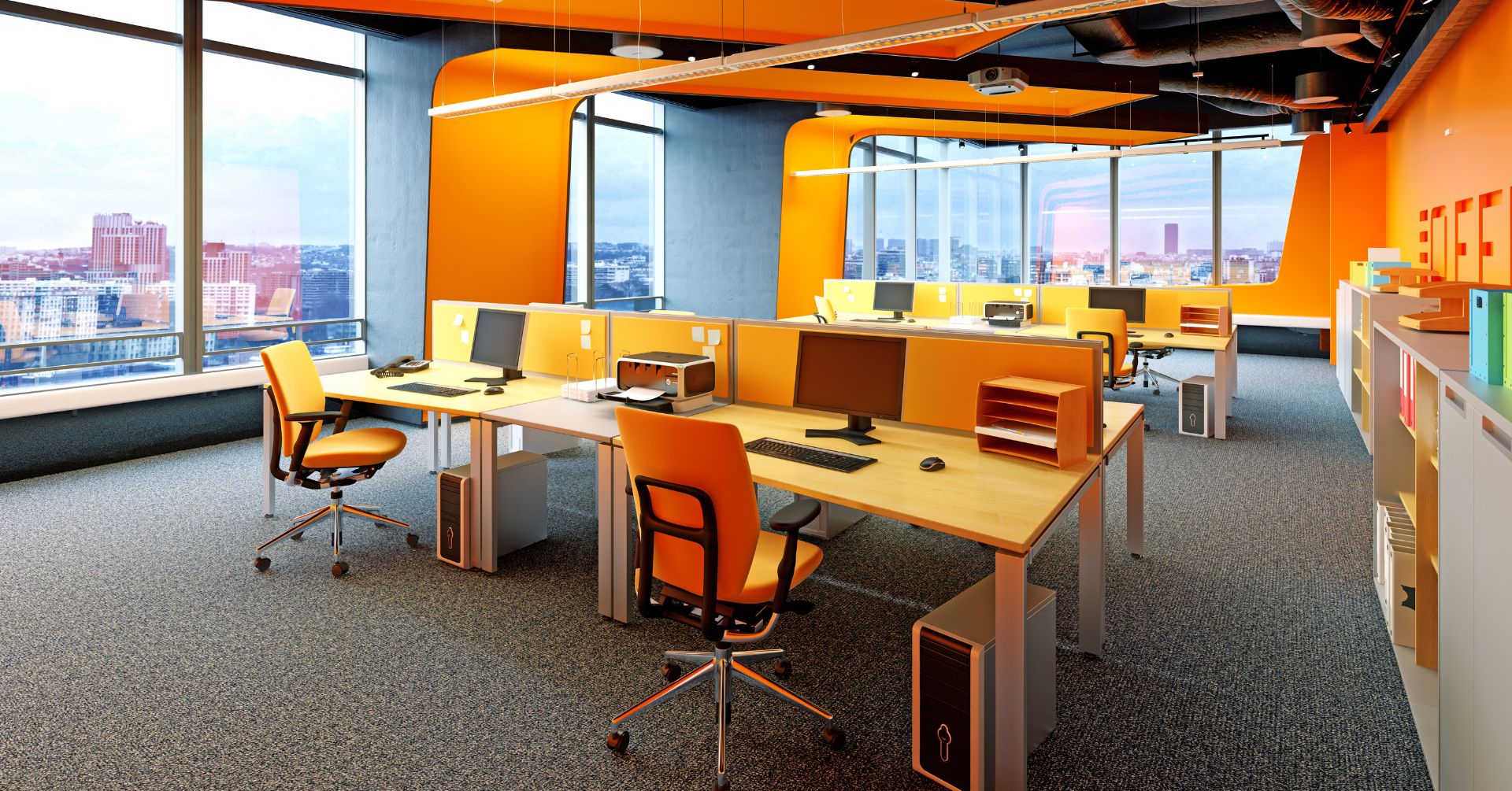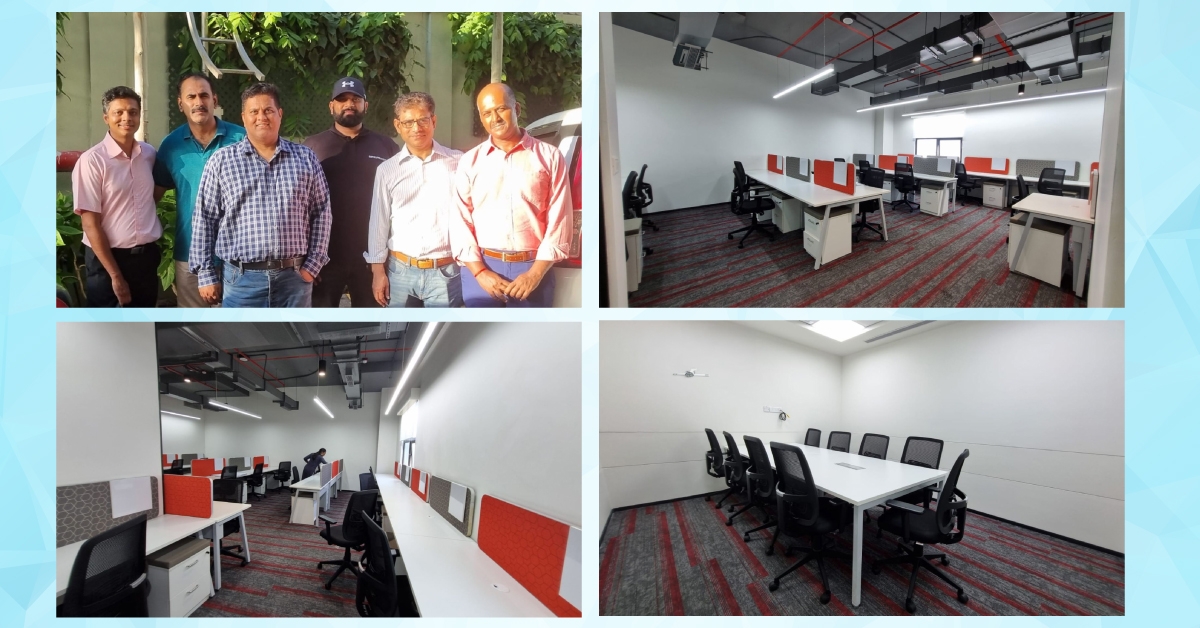Office space
What is the Perfect Office Size? - Office Size Calculator
Shyam Nagarajan / Reading Time: 7 mins
When you're scaling your company, one of the first infrastructure decisions you’ll face is renting office space. But here's the tricky part - how much space is enough? If you’re a founder of a 50-member team, should you plan for 50 seats? 60? 70? Too small, and you’ll be forced to relocate sooner than you’d like. Too large, and you're burning through your runway on unused real estate. The perfect office size isn’t guesswork - it’s math, logic, and forecasting rolled into one.
Choosing the right office size impacts your budget, scalability, and employee productivity. With the GoFloaters Office Size Calculator, you can make a data-driven decision that matches your growth goals and work model.
"Perfect office size depends on your team’s strength and collaboration needs. Typically, 80–100 sq. ft. per person ensures comfort, while hybrid teams can go leaner."
📑 Key chapter:
Why Getting the Office Size Right Matters
Renting an office isn’t just about square footage. It's about aligning your space with your current team structure, projected headcount, and the type of workspace (coworking vs managed office). Overestimate and you waste money. Underestimate and you risk operational chaos. In fact, according to a 2023 Knight Frank report, over 38% of growing startups in India shifted offices within 18 months due to poor space planning - often at great cost and disruption.
More importantly, the modern workforce is increasingly dynamic. With hybrid work, rotation policies, and the rise of coworking, your team’s spatial needs are more fluid than ever.
Office Size Calculator: Overview
GoFloaters has developed an Office Size Calculator used by its sales team - and soon to be made public - that helps you determine the number of seats you’ll actually need. It factors in:
- Your current team size
- Your growth rate (year-on-year)
- Type of workspace (coworking, managed office, conventional)
- Lock-in periods or lease durations
- Your work model (remote-first, hybrid, full-time)
Example:
If you're a 50-member team expecting 10% YoY growth and signing a 2-year lock-in lease, the calculator may recommend planning for ~68–70 seats today.
Why? Because you'll likely reach 65–70 team members within two years. Managed offices require upfront planning, whereas coworking spaces allow for more flexible scaling.
Coworking vs Managed Office: How It Impacts Space Needs
One of the biggest differentiators in office sizing is the type of workspace you choose. Coworking spaces and managed offices offer different layouts, amenities, and collaboration areas - which means your requirement changes based on what you’re signing up for.
Coworking Spaces: These spaces typically dedicate 20–25% of their total layout to collaborative areas - lounges, breakout spaces, and conference rooms. Because you're sharing common zones, your team can utilize them without needing to build out your own. This means you can rent slightly fewer seats.
Managed Offices:
These offer a more private, branded experience - but usually only 10–12% of the area is reserved for collaborative use. You’ll need to factor in additional meeting rooms and breakout zones inside your own unit, thereby increasing your space needs.
If you’re going conventional (bare-shell or custom-furnished offices), you’ll need to size even more generously, planning every square foot for your team’s needs - including cafeterias, restrooms, meeting rooms, and storage areas.
If your team works in shifts or follows a hybrid model, you may not need a 1:1 seat-to-employee ratio. With desk rotation and hot-desking, you can optimize seat utilization and reduce your total office footprint.
Table: Comparing Office Types by Collaboration Space & Sizing Need
| Workspace Type | Avg. Shared Collab Area | Seats Needed for 50 Staff | Flexibility to Scale |
|---|---|---|---|
| Coworking | 20–25% | 60–65 | High |
| Managed Office | 10–12% | 68–70 | Moderate |
| Conventional Office | <10% | 70–75 | Low |
Why GoFloaters Is the Best Partner to Provide Your Ideal Office
GoFloaters isn’t just a workspace discovery platform. We’re a space intelligence company. When you work with GoFloaters:
- You gain access to expert space consultants who use proprietary tools like the Office Size Calculator, Advisor.AI to help you forecast growth and plan accordingly.
- You get matched with coworking and managed office providers who offer exactly the layout and flexibility you need.
- We’ve helped over 500+ companies plan their office footprint accurately - from a global biopharma firm to bootstrapped SaaS startups.
Case Study Highlight:
We recently helped a remote-first company in Bangalore find a managed office where 30% of the layout was dedicated to collaborative areas. Based on their collaboration-to-work ratio, we recommended 65 seats instead of 80 - saving them ₹6 lakhs a year in excess rent.
Some more success stories:
How GoFloaters Helped SaaS22 Find the Perfect Office Space in Chennai
Read Now!How GoFloaters Pioneered a Customized Workspace Solution for Exavalu’s Growth in Chennai
Read Now!Note:
If your primary team is in Chennai or Bangalore but you’re expanding to Gurgaon, Noida, or Pune, GoFloaters provides regional benchmarks. For example, premium coworking spaces in Gurgaon might need 5–10% more area due to limited collaboration zones.
You can use our “offices near me” feature to compare floor plans, pricing, and lock-in periods for each provider - whether you need a 10-seater today or plan to scale to 100 in two years.
How to Calculate Your Ideal Office Size (Step-by-Step)
You can get started using this method:
- Define your current team size.
- Forecast team growth over your lock-in or lease period.
- Choose your workspace model: hybrid, fully on-site, or remote-first.
- Factor in the average shared vs private space of your preferred office type.
- Add 10–15% buffer if you’re planning fixed desks and private cabins.
- Match your collaboration-to-work ratio with the layout offered.
Or just talk to us - we’ll do the math for you.
FAQs
What is the average seat allocation per employee in Indian offices?
Most Indian companies allocate between 40–100 sq. ft per employee, but this changes with layout. Open plan coworking uses less, while private cabins use more.
Should I add a buffer to my office plan?
Yes, especially if you're signing a 2–3 year lease. A 15–20% buffer helps accommodate new hires and avoids the cost of premature expansion.
How does collaboration space impact rent?
Spaces with higher shared collaboration areas can reduce your private space requirements, lowering your effective rent per seat.
Can GoFloaters help with offices in Tier-2 cities?
Absolutely. We have listings in Coimbatore, Jaipur, Vizag, Kochi, and many more - all filtered by layout and collaboration ratios.
Final Thoughts
Your office space is more than square footage - it’s a strategic decision that affects your team culture, growth agility, and bottom line. With hybrid work and rising real estate costs, it's vital to move from gut decisions to data-backed planning.
Using tools like the GoFloaters Office Size Calculator ensures you rent the right size, at the right time, and for the right reasons. Whether you need 10 seats or 100, we’ve got the logic - and the layouts - to support your journey.
Need help figuring out your perfect office space?
Visit ai.gofloaters.com or message our space experts for a free consultation.



